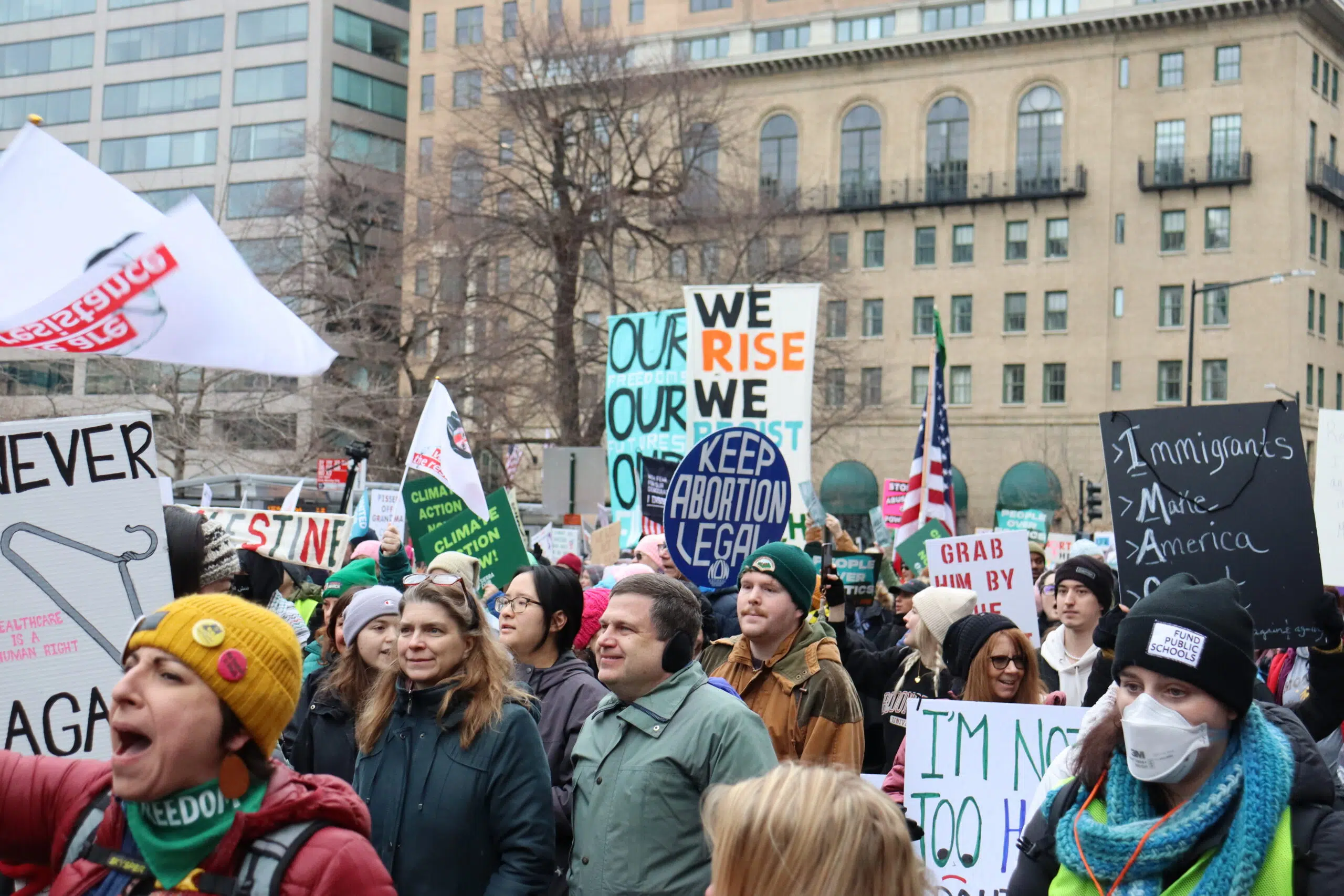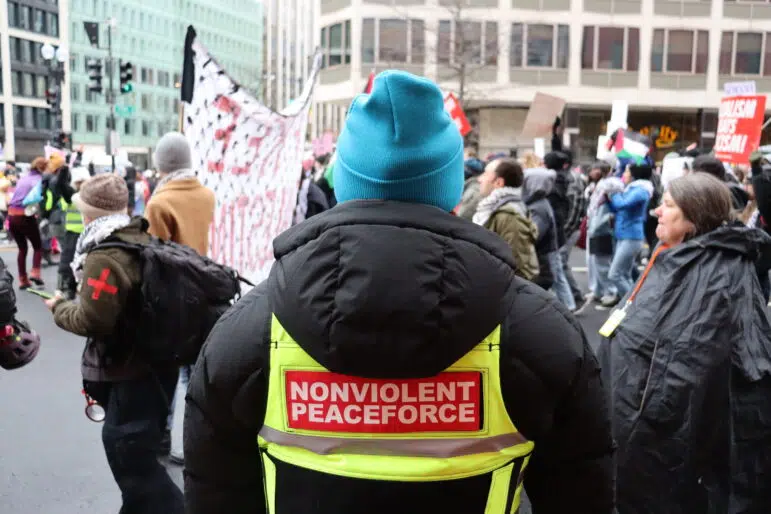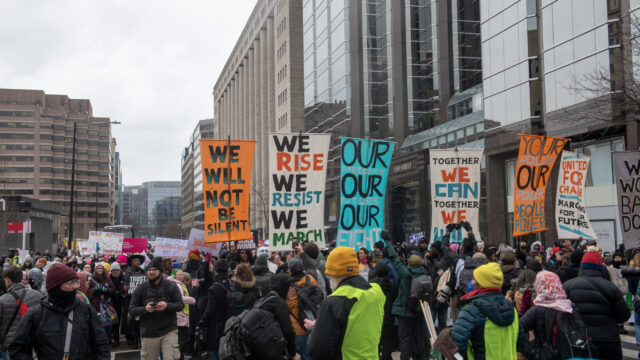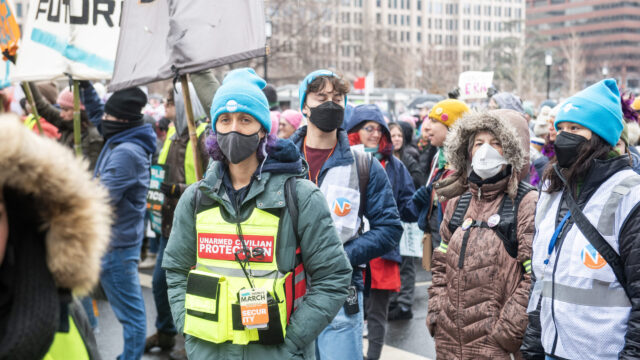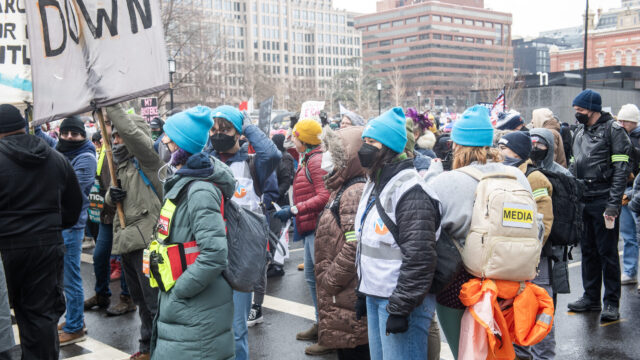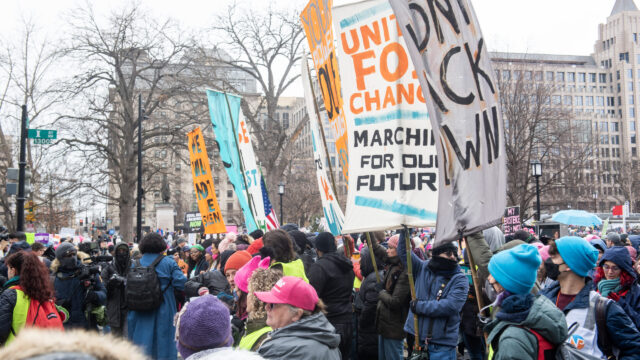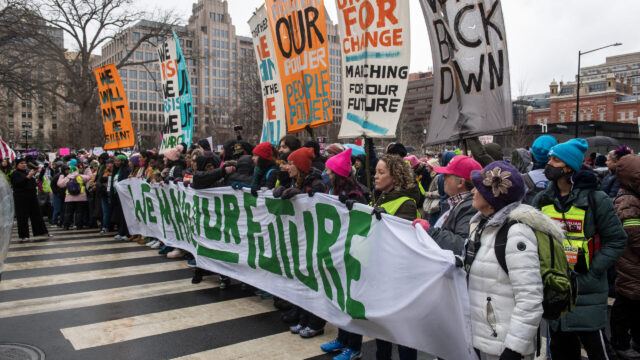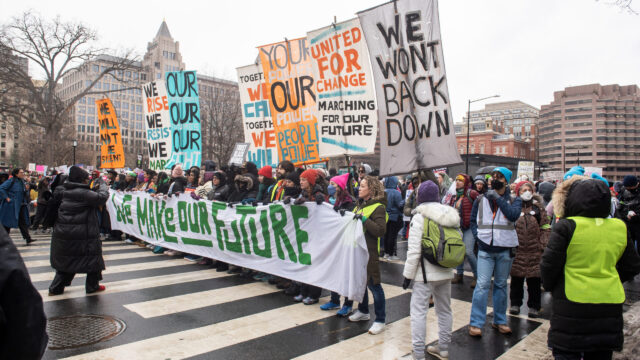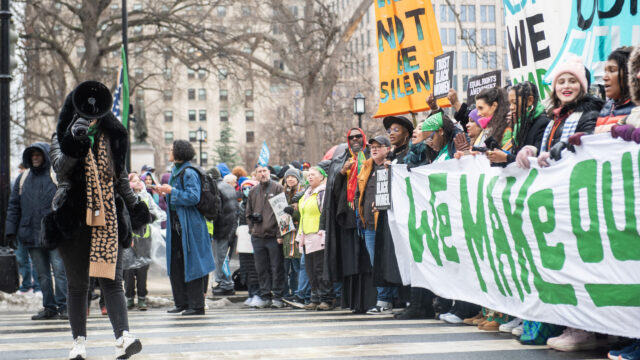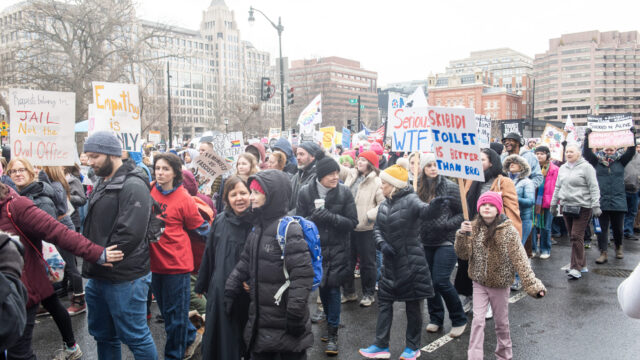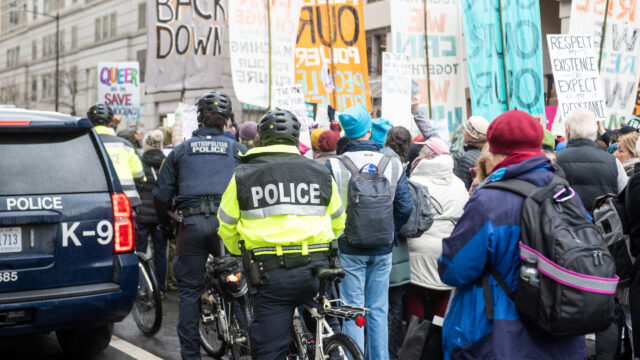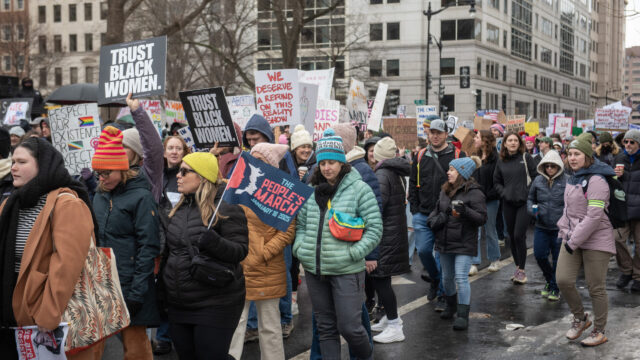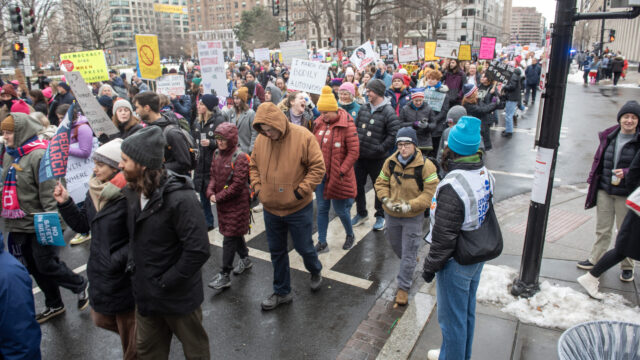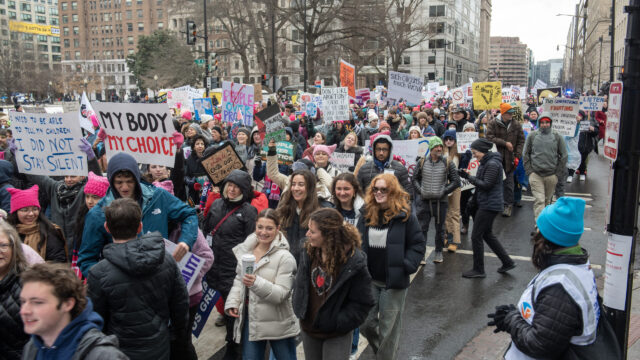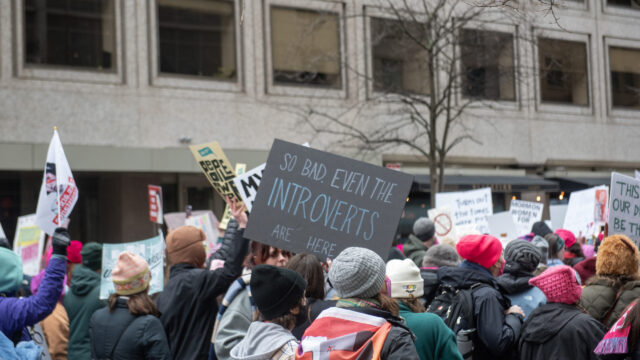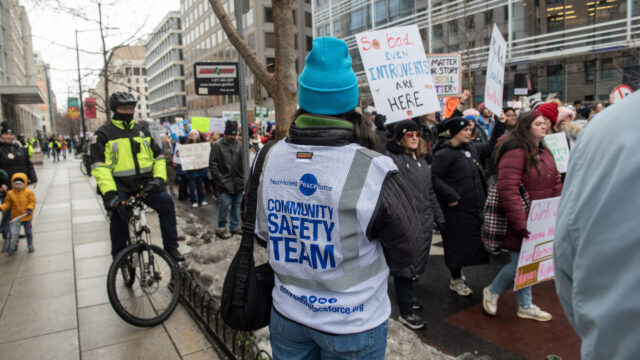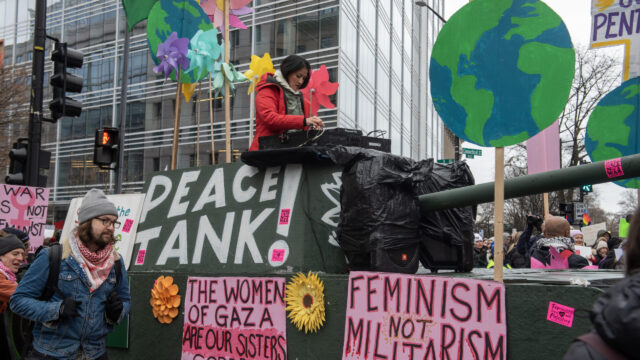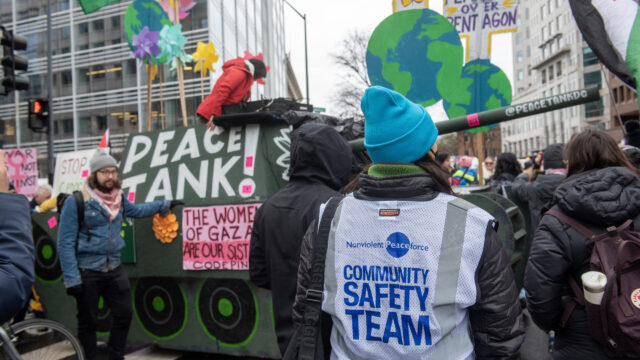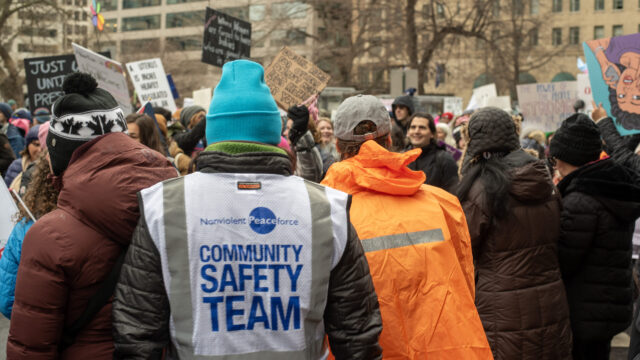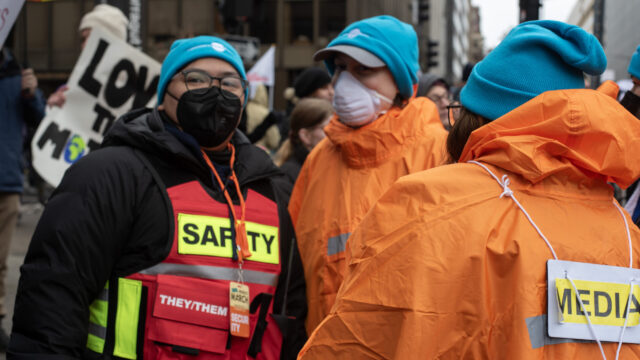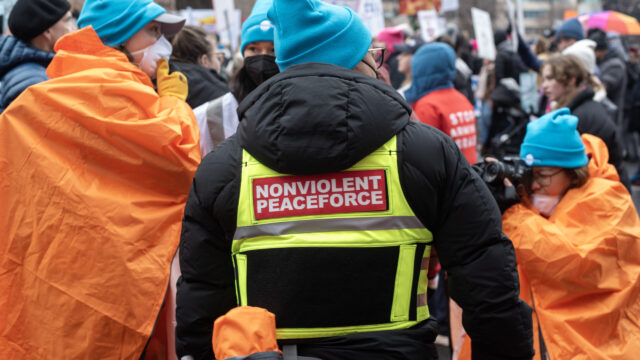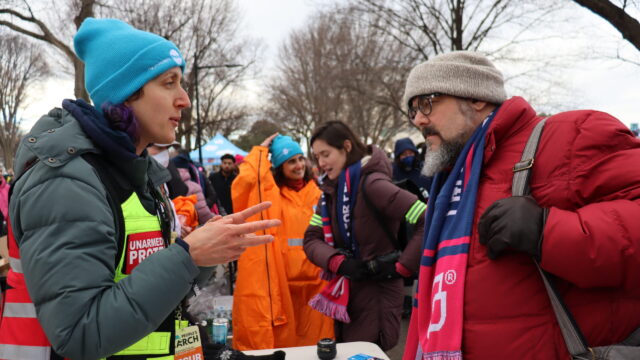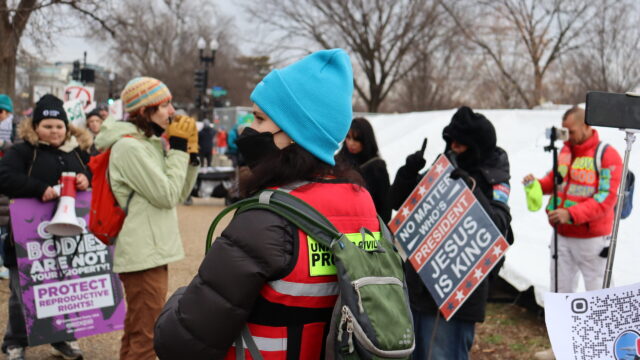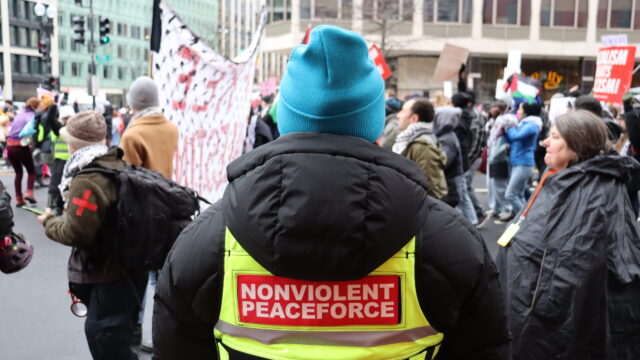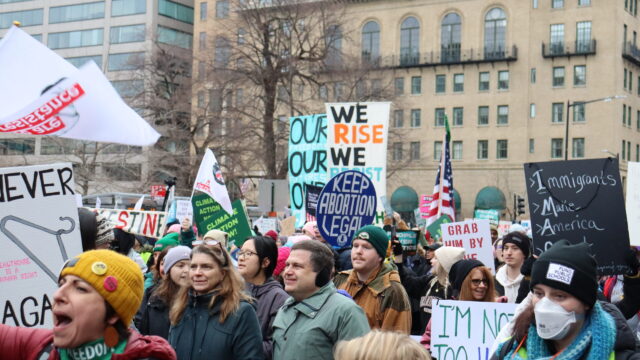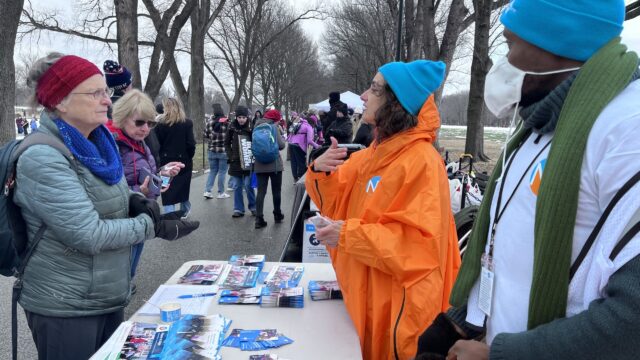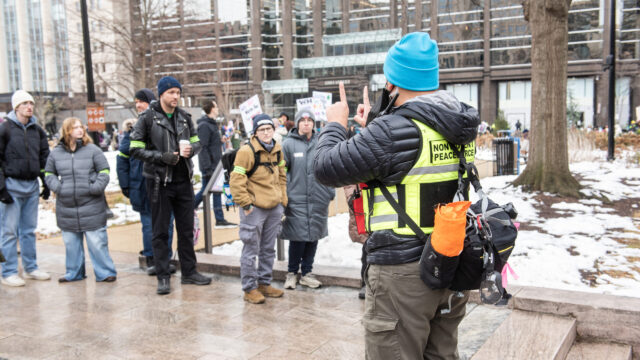Collective Action at the People's March
Across the United States, political and identity-based violence is on the rise, threatening marginalized communities and those advocating for social justice.
According to the Armed Conflict Location & Event Data Project (ACLED), incidents of political violence—including attacks on racial justice protests, LGBTQ+ events, and Indigenous sovereignty actions—have increased significantly in recent years. The risk is particularly acute for communities already facing systemic discrimination, including Black, Indigenous, LGBTQ+, Muslim, Jewish, and immigrant populations.
Grassroots organizers and civic movements have become frequent targets of state repression and vigilante violence, exacerbating the dangers faced by those engaging in democratic processes. The previous election cycle and subsequent presidential administration has brought about an even greater risk, as political polarization and extremist threats escalate.
The People’s March
In this context, the People’s March was organized in Washington, DC, three days before the inauguration of President Donald Trump. Knowing the heightened fears around civic actions, and the number of people with marginalized identities who would be present, organizers called on Nonviolent Peaceforce to ensure safety for all present that day – protesters, counter protestors, and bystanders.
Preparation & Training
In the weeks leading up to the march, NPUS trained over 200 volunteers in safety tools like situational awareness and de-escalation tactics. These are skills volunteers would use to ensure all people present in and around the march would be safe, as well as skills they could use in their communities as violent tensions arise.
What this looked like was making sure that volunteers knew how to signal for medics, offer aid in the case of an evacuation, and how to prevent conflict from escalating into violence using de-escalation tools.
As part of our team's preparation, a threat analysis was performed using available monitoring data. Exit routes were mapped out, and evacuation plans were made, as staff cautiously planned for the worst and hoped for the best.
At the March & Rally
It was a cold day, as temperatures hovered around 30 degrees with freezing rain on and off. Despite the less-than-ideal conditions, over 75,000 people peacefully attended the demonstration.
As a way to check in with their fellow marchers, some safety team members went around and offered hand warmers. Jules Dela Fuente, Operations and Logistics Manager, shared, “I went up to fellow marchers and simply asked them, ‘Hey, would you like a hand warmer?’ This provided a way for me to check in with them and engage in conversation. It also allowed them to have a moment of pause in which they could reflect on their needs, ask for support, and know that someone was also looking out for them.”
During the subsequent rally that converged at the Lincoln Memorial, staff began noticing that March participants were getting into verbal arguments or heated discussions with clusters of the counter-protesters. In these scenarios, NP staff and safety volunteers were able to implement de-escalation methods, including de-escalation through distraction. One safety team member shared this story:
During the rally at the National Memorial, we noticed a small group of counter-protesters gathered near the front. The safety team and I provided a protective presence as tensions started to escalate between both sides. Suddenly, a half a dozen or so police began forming a line in front of The People's March participants creating a barrier in front of counter-protesters.
Then I heard the police lead say she was going to start pushing the line back. I consulted with our safety team lead, Jules, to ask what I could do. They gave me advice to ask if marchers if they were okay and if they needed help.
As the police took formation, march participants were getting visibly more upset with the police as they took formation. A woman began yelling as she asked, “why are you guys protecting them [counter-protesters]?” (The police said they weren't).
Sensing her frustration, I asked the woman if she was okay and if she needed anything. She said she wanted to fight the police. I told her I could tell and pointed out that the group of counter-protesters was relatively small and all the people gathering around them just gave them more attention. Without further prompting, she said I was right and told me she was going to go, then she headed back to the main rally.
I was surprised to see that this simple check in with care and consent helped someone regulate themselves and could prevent greater harm. The police line dispersed soon after as tensions calmed.
Kalaya’an Mendoza, Head of US Programmes explained, “This protective action wasn't only a singular event, it was a culmination of months of work to be able to build a space of learning and direct action where Nonviolent Peaceforce was able to support communities in reimagining and building towards a safer, kinder, and more just world.”
Volunteers and Attendees Express Appreciation
NP was able to cultivate a sense of safety with not just the volunteers, but with the community members that were there, who were- very understandably- afraid for their own safety and security.
“I was actually worried about coming here today. While I was really excited to participate in the march, I was also scared for my safety... It was so relieving to see the NP safety team—I could see how alert, organized, and invested they were in keeping everyone safe. Knowing that NP was there made me feel a lot safer and allowed me to be more present at the march without worrying.” — Cheyanne, People’s March Attendee
“THANK YOU ALL for your tenacity, fortitude, compassion, empathy, kindness, joy, and voices today! There is much to be discouraged by in the world, in our own nation, but today I felt SO INSPIRED and ENCOURAGED to keep going from all of you, glad we were able to be a safety and support to all who needed it today as well! …bring these stories of Hope and Inspiration back with you to your communities and kin!” —Wes P. D, People’s March Volunteer
There’s More Work That Needs to Be Done
The People's March marked a historic convergence of communities in Washington, D.C. and across the nation. However, the U.S. is currently grappling with deep polarization, distrust, and an epidemic of violence. In this critical moment, our work's twin pillars—ensuring safety and breaking the cycle of violence over the long term—are more vital than ever.
In 2024, it took nearly $2 million to do this work in communities from New York to Minnesota to California. In order to meet the need of the communities asking for our support, we need to at least triple that.
Anna Zaros, Director of Advancement, expressed, “We're incredibly grateful for our supporters, your commitment to nonviolence, for being part of our community, and for helping us expand our ability to keep people safe in this moment. We remain committed to building a community of safety across the U.S. where we no longer need to provide direct protection, but cycles of violence are stopped forever.”
* * *
You can explore ways to transform aid into solidarity by financially supporting our peacebuilding initiatives around the world.


